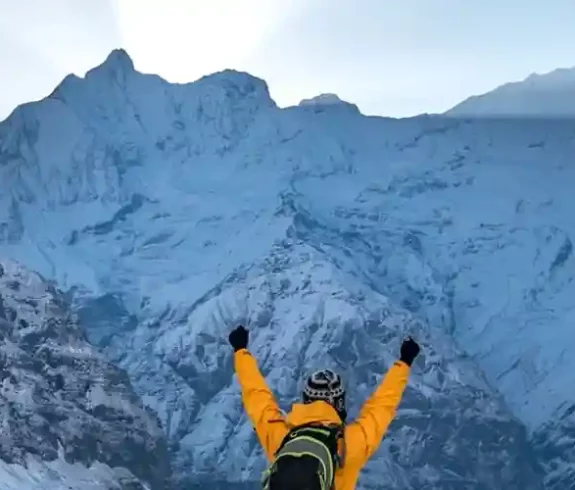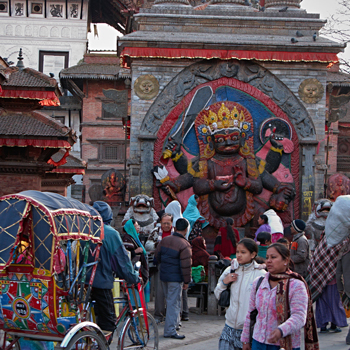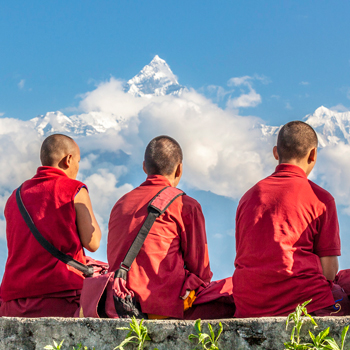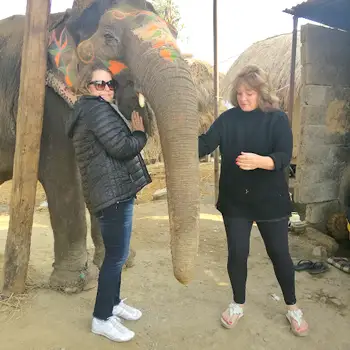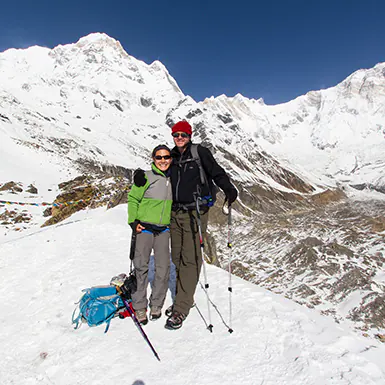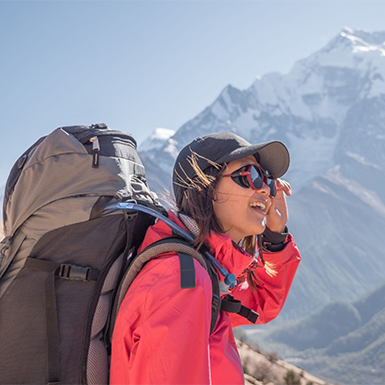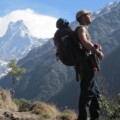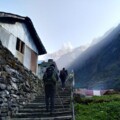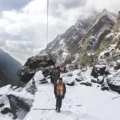Before college, I lived in a rural area of Chongqing, which was unfamiliar with many of modern life’s latest trends and sophisticated aspects; my curiosity about the world ultimately led me to go to Nepal after graduation. After completing the college entrance exam, I moved from the “remote” southwestern mountainous region to the “somewhat remote” city of Changchun in the northeast to pursue my studies. The black soil at the foot of Changbai Mountain provided a unique blend of modernity and history.
I relocated to the Guangdong Greater Bay Area four years later through campus recruitment. Just across the sea lies Hong Kong, the Pearl of the Orient, offering activities like paragliding and snorkeling, countless performances and exhibitions, and infrastructure designed for high-density populations. These are just a few aspects of first-tier cities. For the past two years, I’ve lived and worked in Chengdu, which is surrounded by excellent mountain resources. On weekends, I often travel to Ganzi and Aba, exploring Tibetan and Qiang villages and experiencing diverse lifestyles.
Forgive my digression. I wanted to illustrate that I have a weak ambition for modern conveniences and the lifestyle they bring. Instead, I am always eager to explore the local customs, meet new people, and discover the stunning scenery in remote areas.
Yet, upon arriving in Kathmandu, I wondered, “What is this country’s charm?”
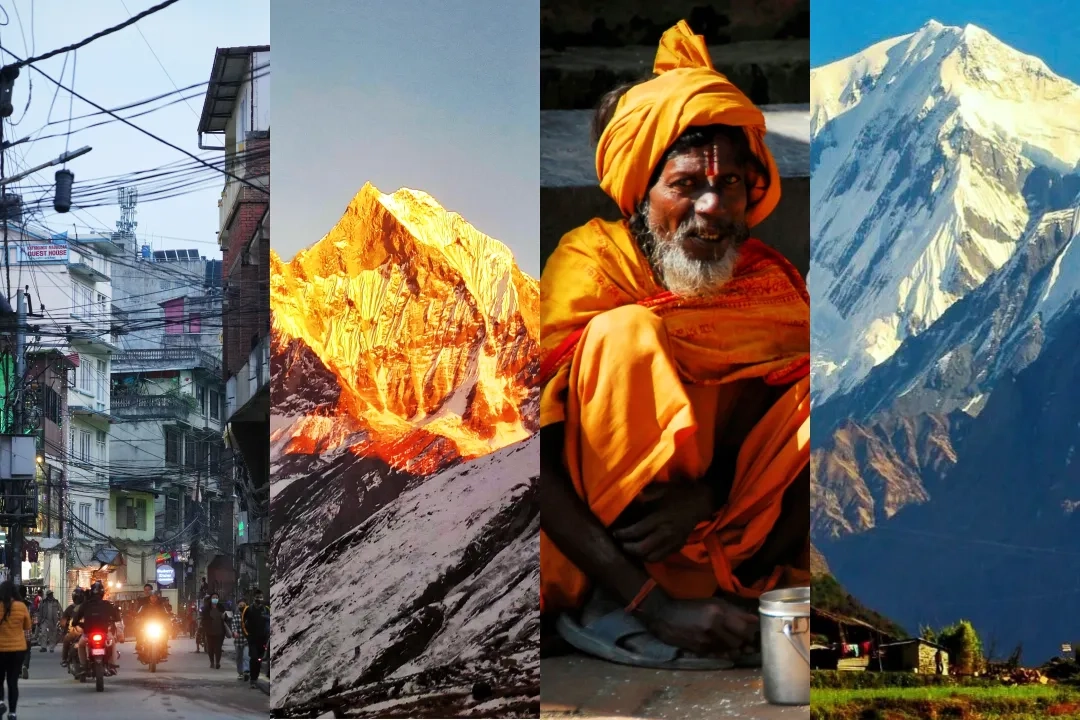
1. I want to roar: Don’t go to Nepal!
This May Day, I led a group on a hike in Nepal’s Annapurna Base Camp, a trek known for blending a “poor but happy country” and “the most accessible base camp of an 8,000-meter snow-capped mountain.” While we came for the hiking experience, it was hard not to be captivated by the unique environment and surroundings.
First Impressions
The airport is situated right next to the city. Just five minutes before landing, our plane circled Kathmandu, offering a bird’s-eye view of this small, flat area nestled among the mountains. The cityscape was a vibrant tapestry of densely packed, colorful low houses resembling a giant Rubik’s Cube sprawled across the land.
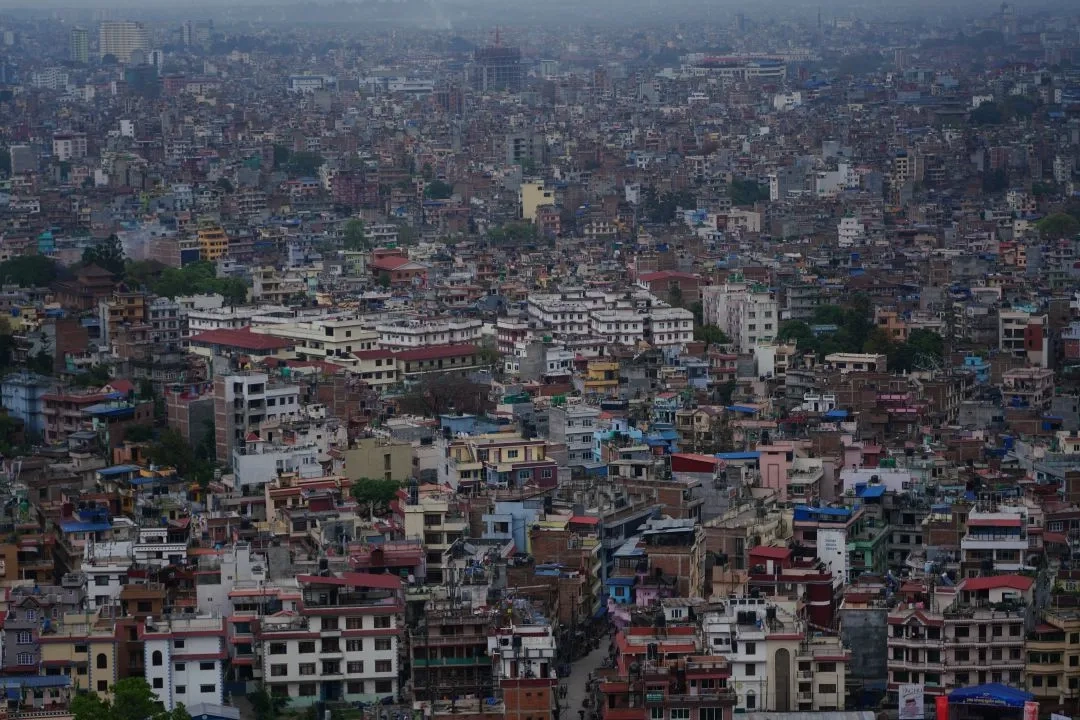
Half an hour after landing, I entered the terminal, got my visa stamped, went through security, and picked up my luggage. The process was smooth and didn’t make me nervous about being in a foreign country. I followed the crowd and exited without any confusion, as the airport was small and straightforward, similar to train stations in second and third-tier cities in China.
As soon as you leave the airport parking lot, you’re immediately on the main road of the capital city. The streets are lined with residential buildings with clothes hanging outside the windows, shops displaying chips and drinks at their entrances, and students in school uniforms playing by the roadside. No traffic lights exist, and buses, motorcycles, bicycles, cars, pedestrians, and even cows share the same road. The occasional verbal instructions of uniformed police officers manage traffic.
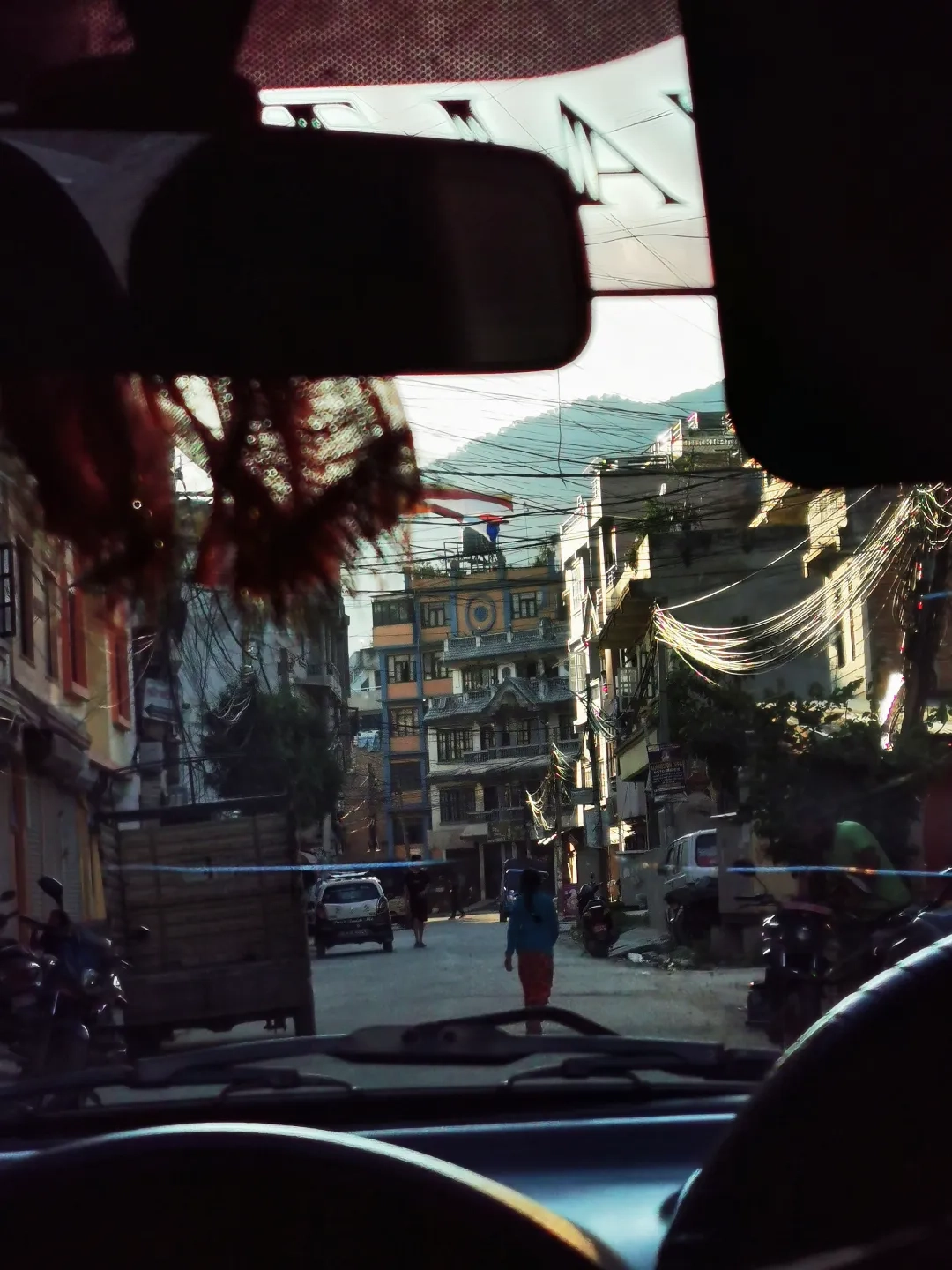
Outside the car window, I saw temples with white pigeons fluttering around, palaces, and ascetics. Women in bright saris walked amidst the dust, and jacaranda trees peeked over the walls, adding splashes of color to the scene.
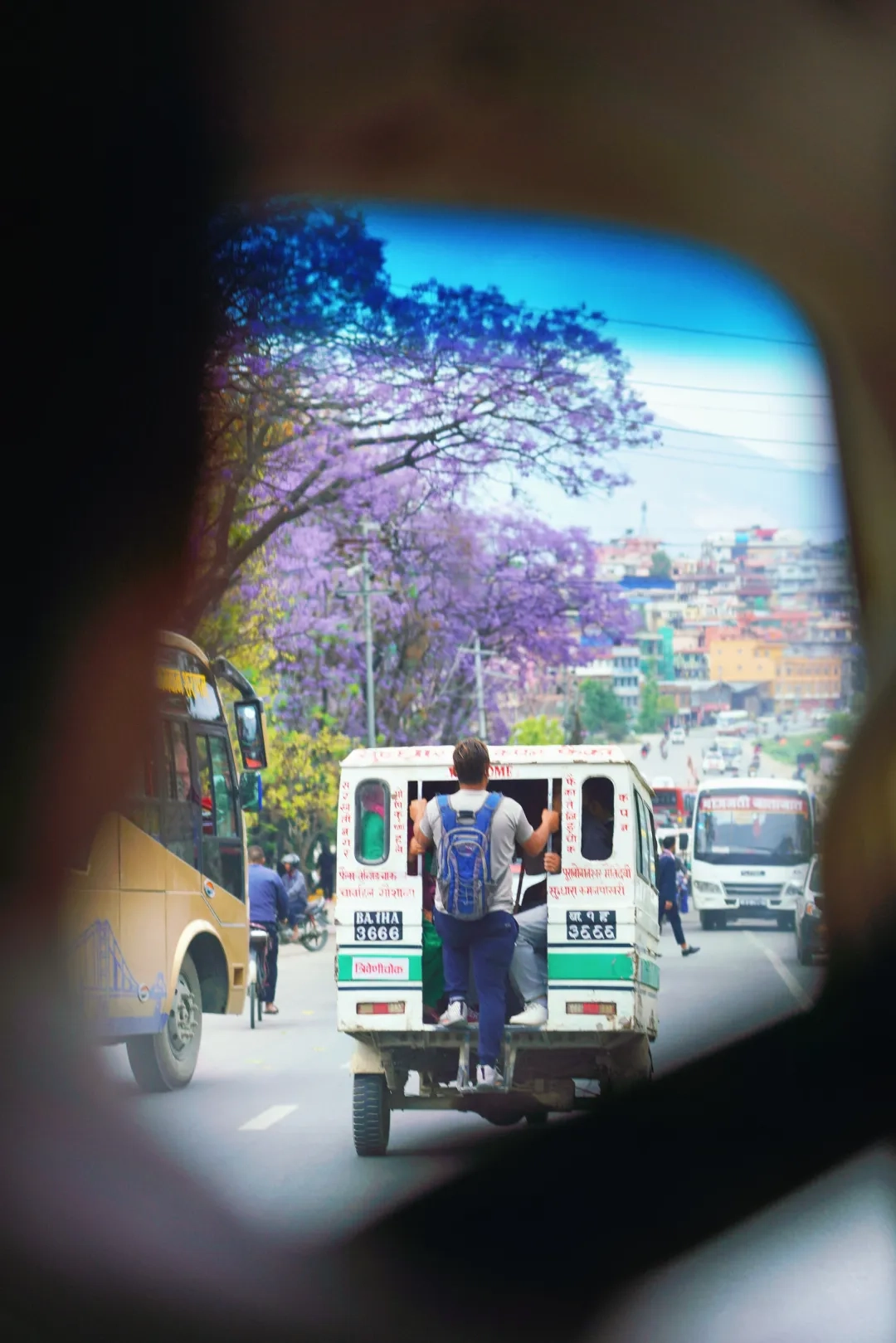
Second Look
Thamel Street, “Little Hong Kong”?
This is the busiest street in Kathmandu and the most prominent tourist shopping area in Nepal, where our hotel is located. The small roads are lined with shops selling Buddhist bowls, thangkas, and other handicrafts alongside stores offering inexpensive and vibrant ethnic costumes. Money exchange and phone card shops, travel agencies, car rentals, and air ticket booking services exist. The area is filled with restaurants and hotels, catering to the diverse crowd.
Above our heads, substantial tangled wires crisscross the sky while backpackers from all over the world wander the streets around us. On the roadside, human-powered tricycles decorated with fake flowers add to the eclectic atmosphere. The hustle and bustle are palpable, making it feel noisy even at a glance.
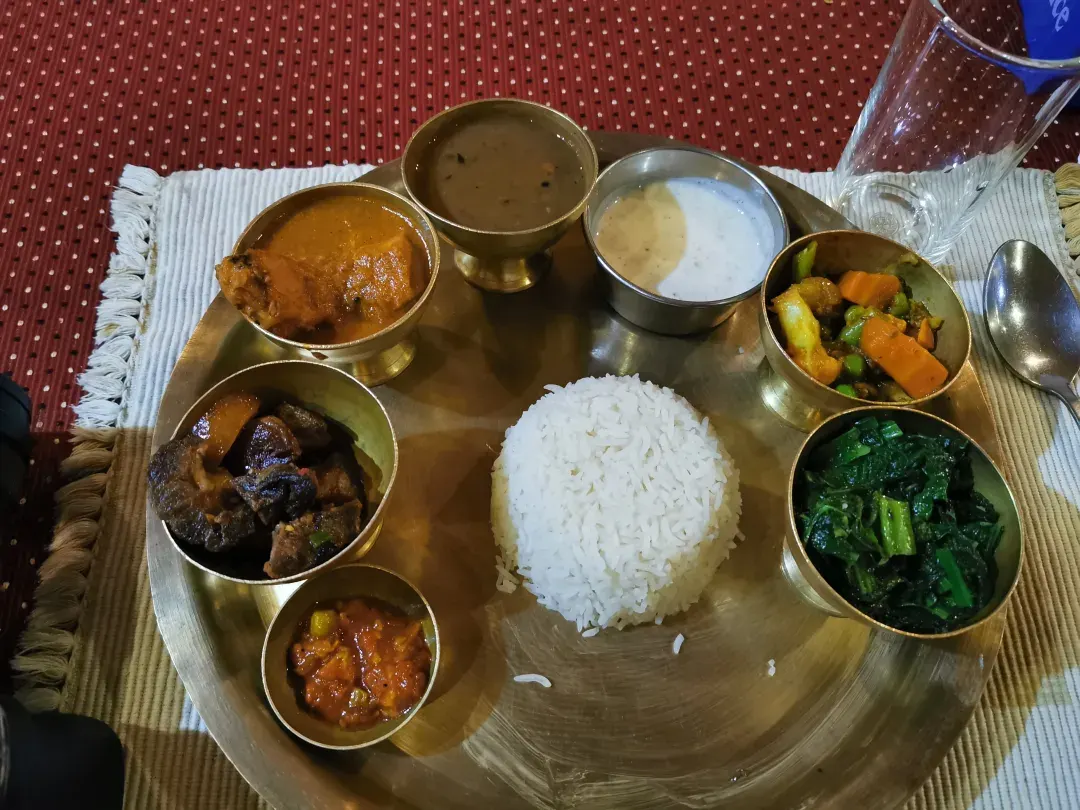



In the end, Kathmandu doesn’t embody the sacredness and solemnity often described in books as characteristic of a “Buddhist Kingdom,” nor does it have the polished sophistication associated with the prosperity of places like Hong Kong. Instead, it is enveloped in dust and an eclectic mix of Western and Eastern influences, creating an atmosphere that defies simple poetic capture. This unique blend can lead to wandering without a clear purpose or the usual sense of disappointment.
Perhaps Nepal’s true essence lies in the temples and monasteries outside of Thamel, where a more profound spiritual experience might be discovered.
The Third Eye
From Durbar Square to the Great Stupa to the Monkey Temple.
“Durbar” means “palace,” and there are three Durbar Squares in the Kathmandu Valley, which were the sites where the kings of the three city-states were crowned and ascended the throne. These squares are now recognized as UNESCO World Cultural Heritage sites.
We visited the largest one, Bhaktapur Durbar Square, which is filled with temples and pagodas of various shapes and sizes, palaces, courtyards, stained glass windows, and statues that showcase distinctive artistic features. It truly deserves to be called “the essence and treasure house of medieval Nepalese art.” From there, we went to Boudhanath, a sizeable round stupa featuring four Buddha eyes on each side, and Swyambhunath Temple, also known as the “Monkey Temple,” this temple is situated on a hill west of the city. The city is dominated by temples and pagodas, creating a rich tapestry of cultural and religious landmarks.

Animals and people share the city. Fat pigeons strut around the squares and streets, dogs lie down and sleep in the middle of the roads at the Monkey Temple, and monkeys perch above, gazing down at the city alongside people. It’s fascinating to see how nature and the city, people and animals, faith, and everyday life blend seamlessly without any sense of discord.


Shrines have the same flavor as people. Every Buddha statue within reach is sprinkled with vermilion powder, and fresh or withered flowers and grains are placed in front of them. Men, women, young, and old alike have a touch of cinnabar red on their foreheads. This mark, made from cinnabar, glutinous rice, and rose petals mashed into a paste, is applied to the center of their eyebrows. This practice reflects both everyday life and deep faith.

There are young people who “do nothing” everywhere. “What do they do?” I asked our local tour guide, a man in his early thirties who is married with children. He explained that “happy Nepal” stems from a cultural attitude of “no desire to compare.” If someone doesn’t have a job, they stay at home; if they don’t have a house, they live with their parents; and if a potential spouse has material expectations, one can find someone with lower requirements. This approach fosters contentment and a more straightforward way of life.

The “adult pressures” that we often take for granted are concerns that, for many in Nepal, are considered something to worry about only after age 40. The existential questions about the “value and meaning of life” that often trouble us don’t seem as significant in Nepal.
So, what is the right path? Can one be poor yet happy? The answer seems like it could be more apparent, but it offers a perspective worth contemplating.
2. Go to the mountains
There is true freedom there!
Pokhara is Nepal’s most famous tourist city, located 200 kilometers from Kathmandu, with a flight time of just half an hour. It serves as a gateway for all routes into the Annapurna Mountains. After arriving at the airport, I met up with my porter friends, and we took an off-road vehicle to our first stop in the mountains, Ghandruk, which sits at an altitude of 1,940 meters. From there, we started a formal three-day trek, gradually ascending in altitude until we reached the Annapurna Base Camp (ABC).
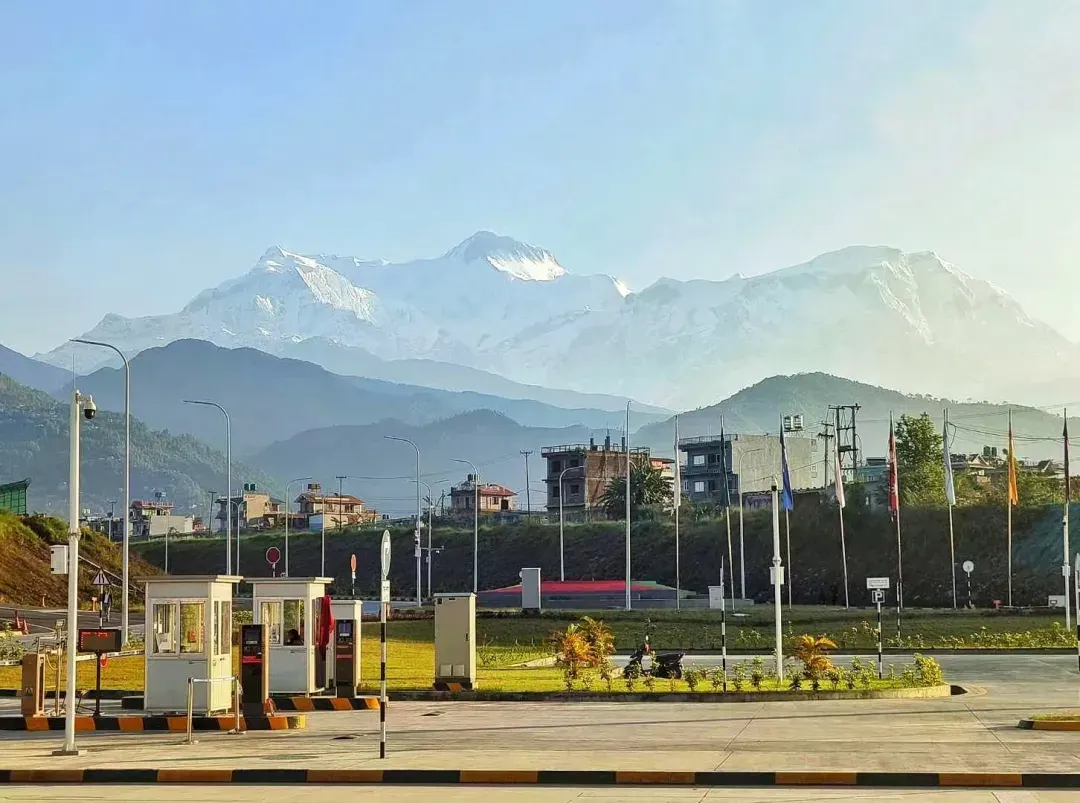
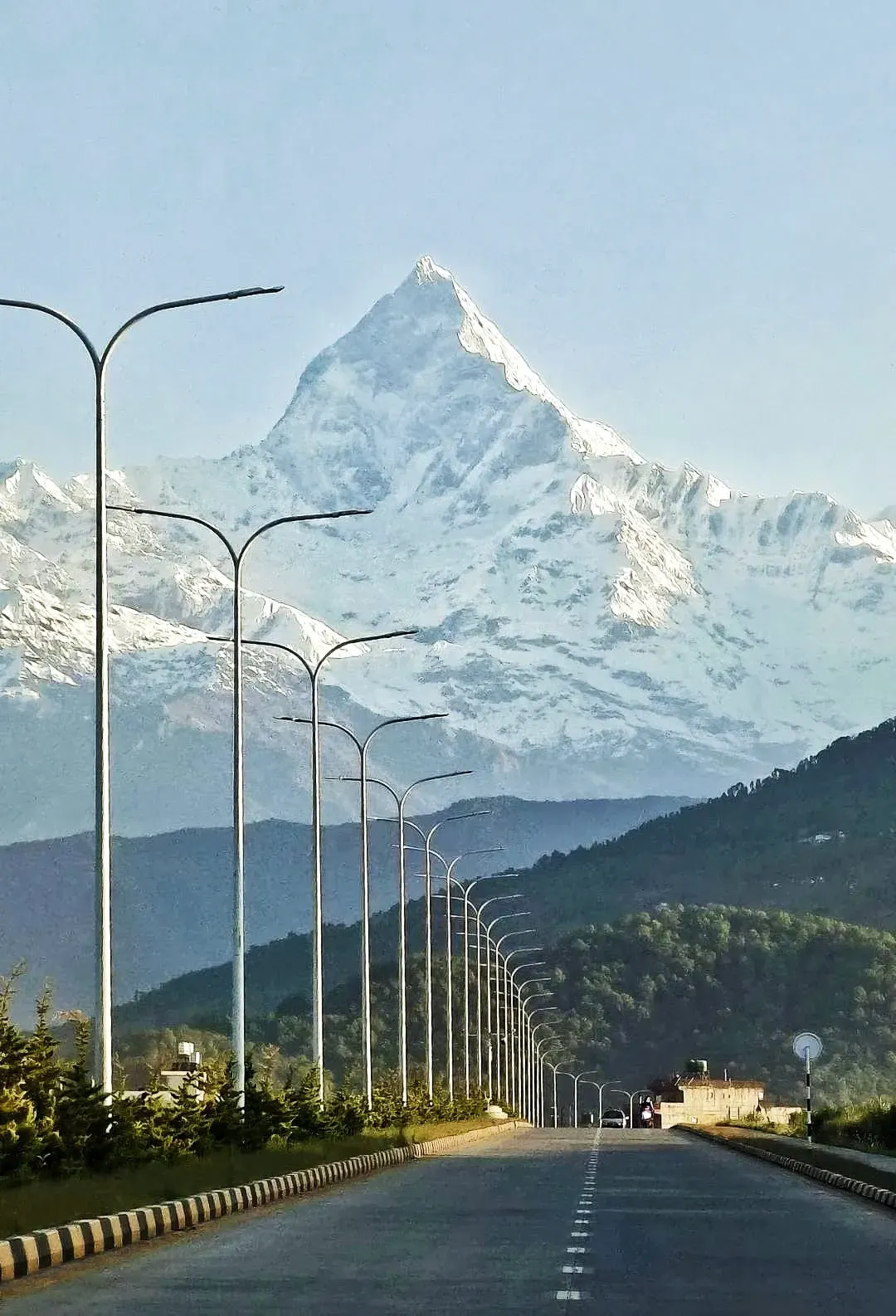
Ghandruk-Sinuwa
Altitude 1940-2340
We were immediately captivated by a breathtaking view as we stepped out of the inn. The majestic snow-capped mountains against the light blue sky formed a stunning backdrop, while nearby villages and terraces connected by stone steps added to the picturesque scene. It felt almost dreamlike, with hikers appearing immersed in a landscape that seemed like poetry come to life, just within reach.
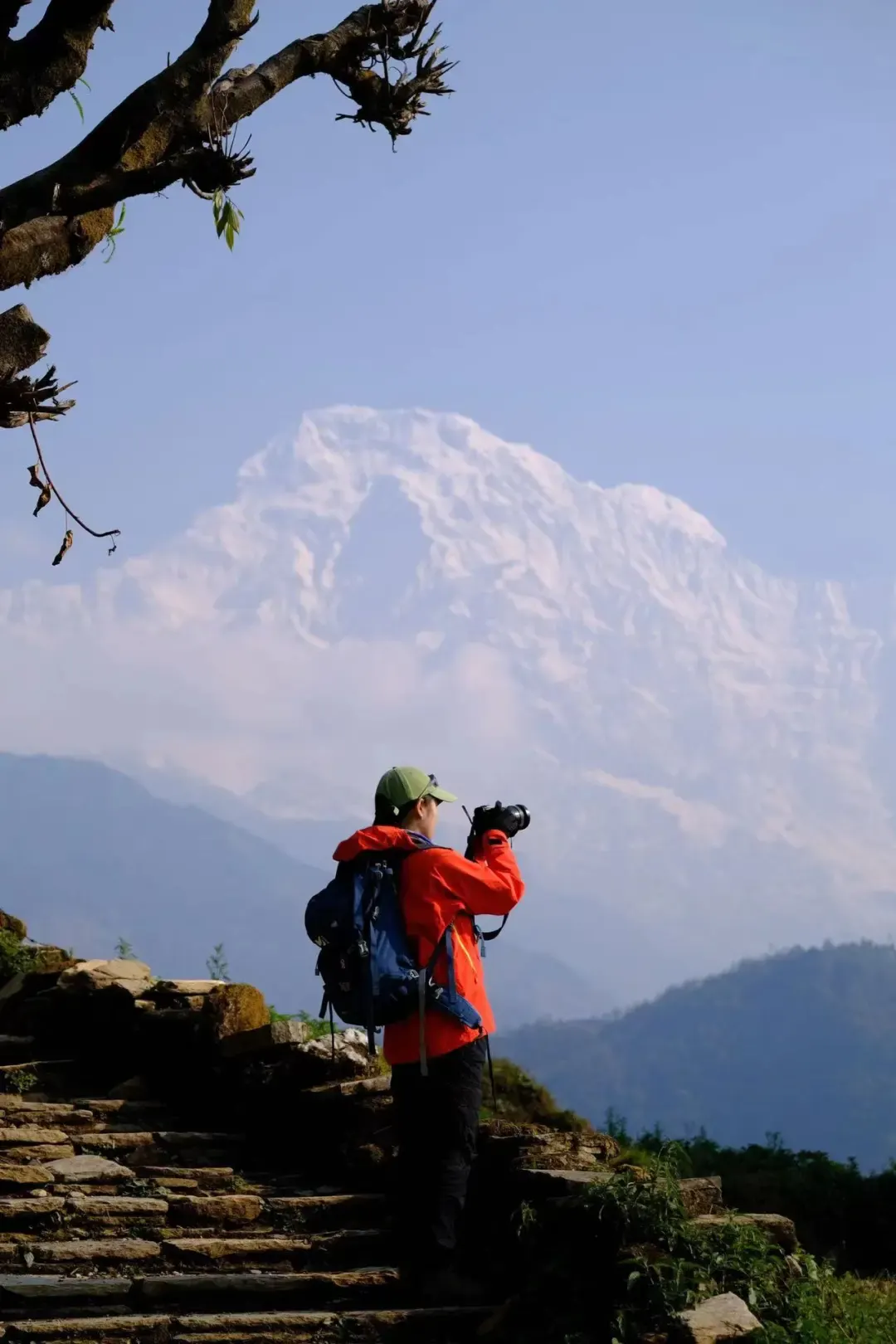
Today’s itinerary involves three ascents and three descents, primarily on stone steps. Due to the relatively low altitude, we passed by people working in the rice fields, children carrying school bags to and from school, and many large yellow dogs who weren’t afraid of strangers and often walked alongside us.

The further we go, the deeper the mountain gets. When we went up the last section from the valley to Sinuwa, dusk was approaching, even though it was less than 5 o’clock due to the sudden heavy rain and dense forests. We finally arrived at the inn wet. The good thing about the Nepalese route is that no matter how “awful” you are during the day, you can still take a shower and sleep in bed at night.
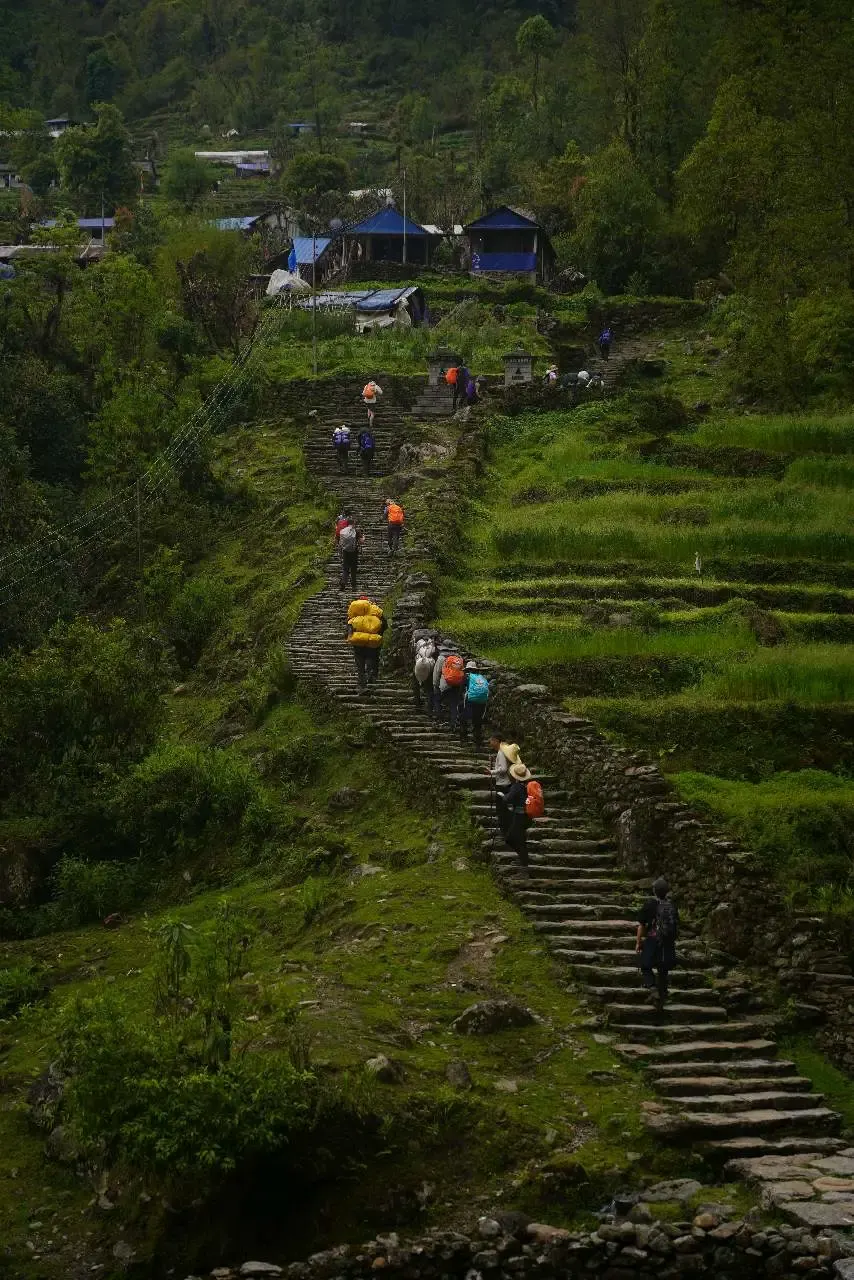
Sinuwa-Deurali
Altitude 2340-3100 meters
The morning brought fine weather, and from our inn, we had a clear view of the tip of Fishtail Peak, peeking out from behind the ultramarine mountain range.
This was the most pleasant day of our trek. Fishtail Peak was visible almost the entire way, becoming more distinct as we walked. The sky constantly changed, with clouds often giving the peak a white outline and green bamboo branches occasionally framing the view. The “holy mountain” displayed its sacred beauty without hesitation, offering a stunning sight throughout our journey.

Today, we mostly trekked through dense forests, enjoying sunshine and shade, lush greenery, and warm bursts of color from flowers. The alpine rhododendrons bloomed in March and April and were still in full bloom on the branches above 3,000 meters, warmly displaying their splendor to us, the late-season visitors.

Before we knew it, we had passed through the villages of Bamboo, Dovan, and Himalayan and finally arrived at Deurali, our check-in point for the night.
Deurali-ANNAPURNA BASE CAMP
3100-4130 meters above sea level
Perhaps due to the onset of the rainy season (June-September), it rained continuously from when we arrived last night until we set out this morning. The distant mountains were enveloped in mist. We set out in full gear, ascending to the village’s highest point and then crossing to the other side of the river valley. We continued upstream, through bushes and onto a rocky beach, and finally arrived at the snow-covered Fishtail Peak Base Camp and Annapurna Base Camp.

We unexpectedly transitioned from rain to snow at around 3,600 meters above sea level. The fine, dense snowflakes covered the gray-brown bushes and black stones, transforming the landscape into a pristine, silent scene that resonated with nature’s purest essence. It was a moment of quiet beauty and profound romance.

The first stop we reached was MBC (Machapuchare Base Camp), approximately 3,700 meters above sea level. We paused here for a cup of hot tea and a brief rest. Then, we continued our ascent for about two hours to reach ABC (Annapurna Base Camp).
Due to the weather, we trekked the final stretch in solitude, as if “no birds were flying in the thousands of mountains, no people walking on the thousands of paths.” This sense of isolation continued until we finally arrived at a wooden signboard with “NAMASTE,” marking the highest point of our journey.



The base camp is nestled amidst snow-capped mountains, offering an accurate 360-degree panoramic view. On a clear day, the scenery includes:


As the clouds dispersed a bit in the evening, I put on my down jacket and wandered around. The air in the snowy mountains was fresh and cool. Far from the crowd, the hills felt ancient and solemn. I was filled with an indescribable joy that made me want to shout out loud. We stopped paying attention to time and felt no urgency as if we were completely absorbed and at one with our surroundings. This was true freedom.
03 Going Down the Mountain
Happiness also lies in the people you meet
After breakfast, we waited until 9 o’clock the next day, but the clouds and mist did not clear. Even at our closest point, the 8,091-meter Annapurna I peak remained hidden. We then began our descent and retraced our path down the mountain over the next two days. Despite being the same route, the journey back felt completely different, offering new perspectives and experiences.
Base Camp -Bamboo
Bamboo Jhinudanda
Hinudanda-Pokhara (Pokhara)
I began to pay more attention to the people we encountered along the way: an elderly tour group from Taiwan, a Polish couple hiking with their children on their backs, a German man who warmly greeted our team members, and a young man from Shandong who had hired a guide and strolled at his own pace. Each person added a unique story to our journey.

The eldest member of our team linked arms with a porter, sharing folk songs despite not understanding each other’s languages. I joined strangers singing and dancing at the Jinudanda Inn, feeling no exhaustion despite the five-day trek.
As the sun set, I climbed onto the roof with local children to fly a drone, eager to capture images of the golden peaks and the lush green landscape below. The experience was refreshing and unforgettable.



The final stretch of our descent involved crossing a long suspension bridge, its iron cables stretching across the valley. The bridge seemed to glow in the sunlight, while the trees on either side cast alternating light and dark shadows.
The sun, the gentle breeze, the sound of horse bells, and the rushing stream below all combined to create a simple and profoundly blissful scene.

04 puzzle it’s just it, unlike anywhere else
We descended from the mountain and returned to Pokhara for a night’s stay. This small town, situated less than 50 kilometers from three of the world’s 8,000-meter peaks (Dhaulagiri, Annapurna, and Manaslu), has a distinctly different atmosphere from Kathmandu. Pokhara is more diminutive and cleaner, with more Western-style restaurants and multilingual billboards lining the streets. The sky above the city is filled with paragliders, and the reflection of Fishtail Peak can be seen in Phewa Lake.
Unlike our flight to Pokhara, we took a tourist bus back to experience more of the local scenery and culture. However, the long journey was exhausting, as the main road between Nepal’s two largest cities remains a narrow and muddy dirt path, passing through numerous crowded towns. The 200-kilometer drive took us from 8 a.m. until 9 p.m.
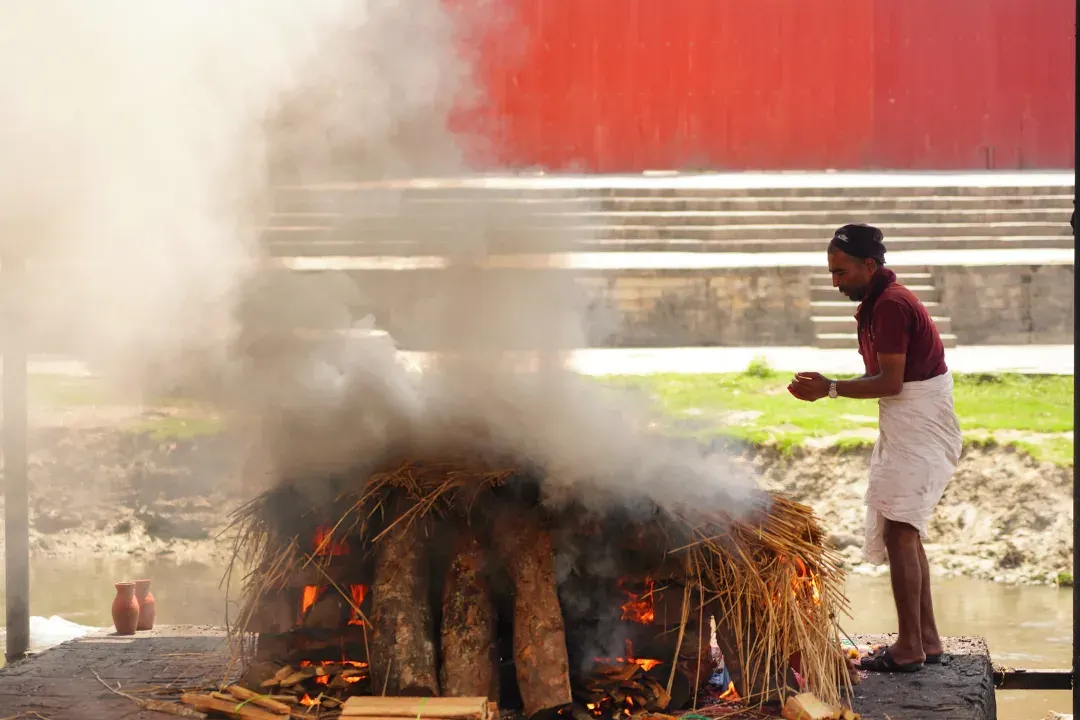
Due to work reasons, I stayed in Kathmandu for a few more days after the trip. During this time, I visited Pashupatinath Temple and witnessed an open-air cremation ceremony. I also met Temba Sherpa, known for his mountaineering feats, experienced the lively atmosphere of a local bar at midnight, and observed the city’s transition from sunset to a starry sky from the rooftop of my homestay.
While Kathmandu may not have seemed more charming than when I first arrived, it certainly felt more vivid and alive with these new experiences.
It’s difficult for me to describe exactly how I feel about it because it’s like nothing else.
The saying “Don’t go there!” carries some truth, much like the sentiment expressed in the movie “Waiting for the Wind.” I understand that some people might have unmet expectations, but this land holds a hidden majesty and charm that leaves an indelible mark. The subtle and profound experiences found in Nepal are not just from hearing a warm “NAMASTE” or the allure of the Himalayas.
However, I am certain that Nepal offers a unique light waiting to be discovered for those who appreciate the scent of the earth, who understand the delicate balance between pain and happiness, fantasy and reality, and who cherish the fragrance of snow-capped mountains and forests.
Travel Story and photos by: Zijun, China
